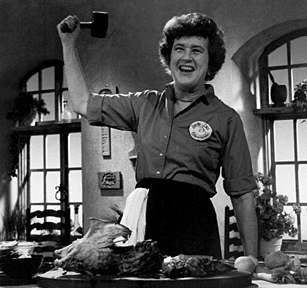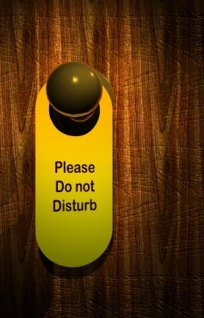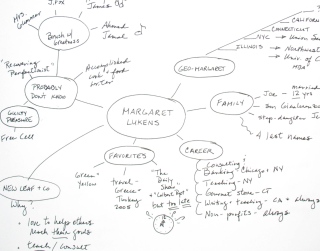Archive for October, 2009|Monthly archive page
Recipe for productivity
Like a featured recipe in a cooking magazine, productivity has many ingredients. Some are obvious (oh, there’s beef in the beef stew!) while some are subtle (who knew that excellent doughnuts actually require a whisper of nutmeg??) We can leave something out, we can make substitutions, but the dish won’t achieve the same heights without all its parts.
Here’s the ingredients list for productivity:
- Be clear about your priorities
- Funnel everything into one system
- Manage your time and energy
- Know how to delegate and discard
- Play to your strengths
Are you missing any ingredients? Is there something you’d like to add to your recipe?
Do Not Interrupt Me!
The national “do not call” list is well-known to many people. By registering your business or home number, telemarketers once were forbidden from calling your number – at dinner time or any time – for five years.
Exceptions included those who were calling for legitimate charities, which sadly include the well-paid fundraisers who dial on behalf of the local police and fire departments, and anyone to whom you’ve given permission.
Recent changes to the do not call list have eliminated the five-year expiration date. A law which became effective in February changes the “5-year” rule. Now, once you enter your phone number on the list, your preference for uninterrupted dinners lasts forever.
If you should receive a call after registering with the list, file a complaint here. This address also works to register a new phone number you’d like post a “no call” notice, so that you will not receive marketing calls.
“Eliminating Excess” teleclass
Are you a professional organizer or hope to become one? Don’t miss the upcoming teleclass “Eliminating Excess”. This class is part of the series of classes offered by the National Association of Professional Organizers.
You will be able to assist your clients when:
- one office mate calls the stuff clutter, and the other says it’s a collection
- your client wants to de-clutter AND keep as much stuff as possible out of the trash
- your client is discouraged because they’ve decluttered before, but stuff always comes back
- your client has a cluttered calendar and task list
In this course I supply strategies for identifying clutter and hoarding, forms to help you and your client formulate a project plan, ideas for dealing with clients with different learning styles, lots of resources to donate and recycle surplus items, and much more.
This teleclass will be offered for the first time on Thursday, November 12 from 7 to 9 m Eastern, 4 to 6 pm Pacific. To register, visit the NAPO curriculum page and click on the bar for PO-204T: Eliminating Excess.
Three everyday uses for mind maps
As I began to write an outline of her project, my usually reserved client let out a desperate groan. She was experiencing feelings of being overwhelmed and “beaten up” by the things she had to do, and the outline looked like a big weapon. I avoid making my clients miserable, so I whisked the paper away and asked, “Are you interested in trying something new?” She was.
I picked up a fistful of colored markers and, using a big sheet of flip-chart paper, wrote a few words naming her project in the center of the sheet and drew an oval around them. Radiating from the central theme, we began to add various concerns, sub-projects, thoughts, and questions. The “something new” that I introduced was mind-mapping, a technique to organize information in a non-linear way.
Use mind-mapping whenever you want to gather information, ideas, and questions; sort out connections that may not be apparent, or present information in a more holistic format than is possible with lists or outlines.
Here are three uses for mind-mapping:
1. Designing a class, speech, or book. Put the topic or title in the center of the page, then add themes you want to address related to that topic.
2. Introducing someone publicly. Put the person’s name in the center of the page, then surround it with all the areas you want to cover: work history, awards and accolades, contributions to the industry, philanthropic interests, and so on. It’s amazing how much information a one-page mind-map will hold, allowing you as the presenter to speak from compact notes without reading text. The speaker will bless you for it.
3. Planning a project such as a move or renovation. Into the center of the page goes the goal. Surrounding it are the broad categories of action needed to make it a reality. Radiating from those categories will be discrete tasks.
If you’re struggling to get your arms around a project, create a mind-map first. You’ll be off and running.
What will you do with a mind-map? Leave a comment here.
 Comments (3)
Comments (3)





